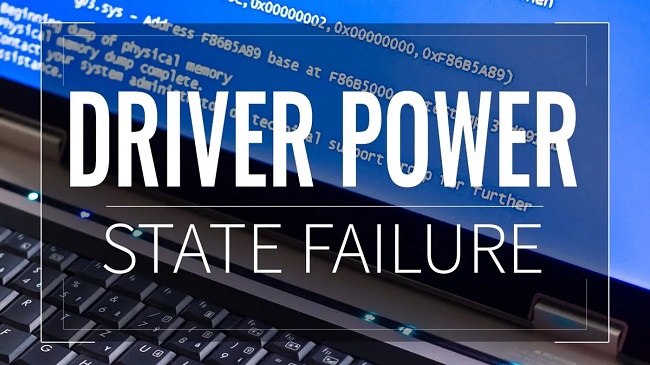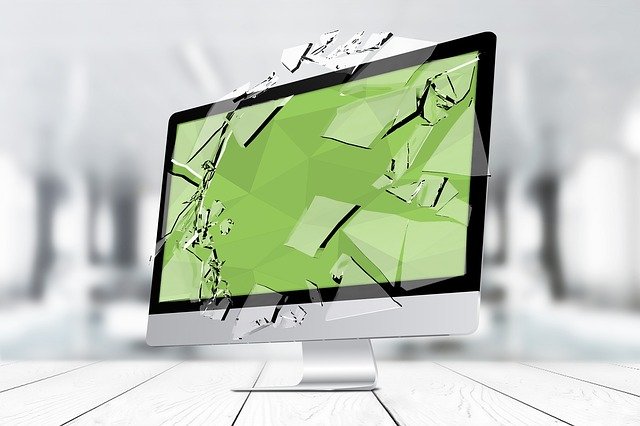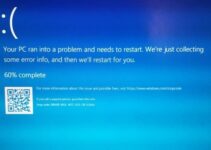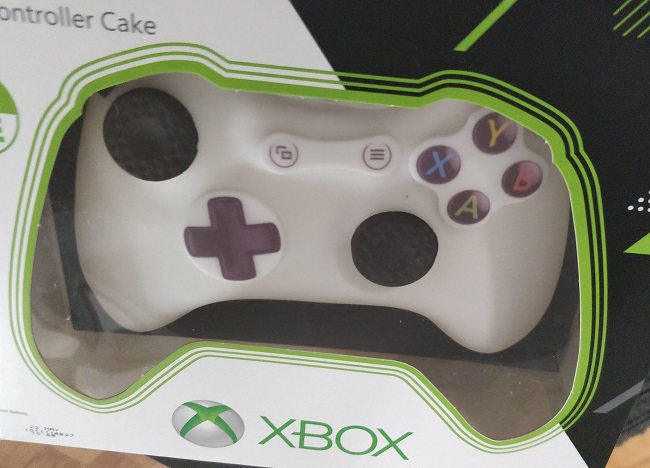When our computer malfunctions, it is really inconvenient. When there is a problem with the computer, we will be unable to complete the things we desire. “Driver Power State Failure” is one of the most regularly encountered computer problems.
The blue screen of death is another name for this. This problem is commonly seen by Windows 10 users. This issue can occur while playing games, using applications such as AutoCAD, browsing the web, or using Photoshop on your PC.

How To
This issue is so bizarre that it may appear on your computer even if you aren’t using it. You may also encounter the error code 0x0000009F or the Driver names nvlddmkm.sys and ntoskrnl.exe. Power management for certain devices is the reason for this.
When the PC tries to wake a device from a low-power to idle state, but the Driver refuses to respond, Driver Power State Failure occurs. There could be a variety of different reasons for this BSoD problem. This is usually due to the presence of appropriate drivers on your computer.
Fortunately, by installing the greatest software on your computer, you can avoid this dreadful error. Depending on the source of the error, you can either restart the computer or use one of the ways listed below to resolve it.
Read Also:
When they encounter the blue screen of death, many Windows 10 users become panicked. There’s no need to panic; simply follow the simple actions outlined below to correct the problem. When you log on to your computer, you usually get a blue screen of death.
Driver Power State Failure is a frustrating error that affects both you and your computer. The following problems have been reported by Windows users as a result of the Driver Power State Failure error. Please tell us what they are:
Driver Power State Failure Stop Code – this is a common BSoD issue that appears on your screen while you’re using your computer.
Windows 10 Driver Power State Failure The worst part is that this problem affects practically all devices, including Toshiba, HP, Dell, Acer, Alienware, Samsung, Sony, and Lenovo.
This issue has been reported by many HP, Lenovo, and Dell customers. Failure of the Driver Power State As the name implies, it is most likely tied to an Nvidia graphics card, and we have provided you with the appropriate remedy to avoid the issue.
Driver Power State Failure USB is a USB device problem that occurs when you connect a specific USB device to your computer. To resolve the problem, you may need to unplug all USB devices from your computer and look for the one or more USBs that are producing the error.
This problem shows when you load up your computer and it says Driver Power State Failure on Startup, Boot. If this problem occurs at startup, you will be unable to turn on or use your computer.
Driver Power State Failure Kaspersky, McAfee – this problem might be caused by third-party apps or software, such as your antivirus. According to user reports, Kaspersky or McAfee are the most common causes of this problem.
Driver Power State Failure Blue Screen — A driver-related issue frequently causes a 0x0000009f error code to appear on a user’s PC. In any case, Microsoft fixed the issue in the KB 2983336 update file.
Failure of the Driver Power State ntoskrnl.exe — This error occasionally displays the name of the file that is causing the problem. ntoskrnl.exe is the most common cause of this issue.
We’ve compiled a list of the nine most effective techniques for fixing Driver Power State Failure. Before attempting to resolve the problem, we recommend that you read through the full guide and skim through each solution.
Driver Power State Failure in Windows 10
Choose the best solution for your computer’s Driver Power State Failure issue. Always begin with the simplest and most effective options. This will save you time and provide you with the desired outcome.
1. Drivers
When your drivers become outdated or there are multiple incompatible drivers in your system, you will experience Driver Power State Failure.
You may update the drivers in two ways: by updating Windows, manually using Windows Update, or by utilising a trusted third-party solution to install the latest drivers. If you can’t log in to Windows 8.1 or Windows 10, follow the procedures below:
Step 1: First, download and install the “TweakBit Driver Updater” on your computer.
Step 2: Following the installation of Driver Updater, the programme will automatically scan your PC and cross-check all of your installed drivers against its cloud database. Wait patiently for the scanning to finish. The Driver Updater will suggest the appropriate updates to you automatically.
Step 3: When the scanning procedure is complete, it will provide a report of any detected issues on your computer. Keep an eye on the list and update the drivers as needed.
You may install all of the suggested updates at once by selecting the “Update All” button at the bottom, or you can install each one separately by clicking the “Update Driver” link next to the driver name.
Note: Some drivers had to be updated in multiple phases. As a result, whenever you’re prompted, click “Update” and install all of the components.
Notice that not all of this tool’s features are available for free.
2. Start Your Computer in Safe Mode
The first and most important step is to enter Windows 10’s advanced starting mode by following the procedures below:
Step 1: Initial, check the BIOS to see if the CD/DVD drive is set as the first boot device.
Step 2: Insert the Microsoft Windows 8.1 boot DVD into the CD/DVD drive.
Step 3: Reboot your Windows 8, Windows 10 operating system.
Step 4: A notification will appear prompting you to “Press any key to boot from CD or DVD.” So, to start the Windows 8 installation from the inserted CD or DVD, press any key on your keyboard.
Step 5: In the window that appears after booting Windows 8.1 DVD, click left or click the “Next” button.
Step 6: A screen will show with the option “Repair Your Computer,” tap that choice or click left.
Step 7: Next, tap or click the “Troubleshoot” option.
Step 8: Click or tap “Advanced choices” in the next window that appears.
Step 9: In the Advanced settings window, left-click or tap the “Command Prompt” option.
Step 10: In the command prompt, type C: and hit enter.
Step 11: In the command prompt, type the following: Enter the command BCDEDIT /SET DEFAULT BOOTMENUPOLICY LEGACY.
Step 12: To quit the command prompt, type “EXIT” in the command prompt and hit enter.
Remove the inserted Windows CD/DVD and restart the machine in this final step.
After you’ve completed the procedures above, go into Safe Mode and uninstall any newly installed drivers by following these steps to fix Driver Power State Failure:
Step 1: After the computer has rebooted, keep pressing the F8 key on the keyboard.
Step 2: From the Menu, select Safe Mode from the list of alternatives.
Step 3: While Safe Mode is booting up, open “Device Manager.”
Step 4: Uninstall all of the most recent drivers that have been installed. You can remove them by right-clicking on the drivers and selecting “Uninstall.” “”Uninstall Device” is a choice.
Step 5: Restart your computer and see if you’re still getting the same issue. If the error persists, uninstall all other recently installed drivers and repeat the process until your PC functions normally.
Note: If you locate the driver that’s producing the blue screen, go to the manufacturer’s website and see if there’s a newer version that’s compatible with your system to avoid getting the Driver Power State Failure message.
3. Perform an SFC Scan
Corrupted files are the most common cause of Driver Power State Failure. An SFC scan, on the other hand, is a simple way to fix this problem. The steps for performing the SFC scan are as follows:
Step 1: On the keyboard, press “Windows + X” and pick “Command Prompt (Admin)” from the menu to fix the Driver Power State Failure problem. (Select “Powershell (Admin)” if the Command prompt is not available.)
Step 2: Type sfc /scannow into the command prompt and press Enter.
Step 3: The scanning process begins, and it could take up to 10 minutes to complete. (Be careful not to interrupt the scanning process.)
If the SFC scan fails to resolve the issue, you should run the DISM scan instead. Please follow the procedures below:
Step 1: As specified in step 1, open the “Command Prompt (Admin)” command prompt.
Step 2: In the Command Prompt, type the following commands:
DISM.exe /Online /Cleanup-image /scanhealth DISM.exe /Online /Cleanup-image /scanhealth
DISM.exe /Online /Cleanup-image /Restorehealth DISM.exe /Online /Cleanup-image /Restorehealth
By pressing enter, you can run these commands.
Step 3: After running both instructions, see if the problem has been resolved.
If you were unable to execute SFC scan earlier due to DISM scan failure, always run SFC scan after DISM scan completion. The problem message will disappear once both scans are completed.
4. Change Your Power Settings
Driver Power State Failure may occur as a result of your computer’s current power settings. Follow these simple procedures to alter those settings:
Step 1: Type “Control Panel” into the search box, or press “Windows + X” on the keyboard and choose “Control Panel” from the list.
Step 2: Select “Power Options” from the drop-down menu.
Step 3: Select the power level of the button.
Step 4: Next, alter the currently available options.
Step 5: Last but not least, turn off “Turn off rapid startup (recommended),” “Sleep,” and “Hibernate.” “By unchecking the boxes, you can expand your options. Make a click on the “To apply and save the changes, click the “Save” button.
5. Change Your Power Plan Settings
Driver Power State Failure could also be caused by the current power plan. Change the power plan parameters by following these steps:
Step 1: Open “Power Options,” choose your existing plan, and then click “Change Power Plan Settings.”
Step 2: Choose “Change advanced power settings” from the drop-down menu “Suddenly, a list of items emerged.
Step 3: From the list, open the “Sleep” section and check whether “Sleep and Hibernate” is set to “Never.” “.. Check-in is also available “The section “Power buttons and lid” is set to “Do Nothing.” Save the changes by selecting “Apply” and then “Ok.” “a set of buttons
Set “Graphics settings or PCI Express and Lnk State Power Management” to “Maximum Performance” and “Wireless Adapter Settings” to “Maximum Performance” as an optional step.
If you’re using a laptop, it’s a good idea to remove the battery and plug it into a power outlet.
6. Uninstall Your Antivirus slSoftware
Antivirus software provides a protective shell for your computer, but it can occasionally interact with Windows, resulting in a Driver Power State Failure issue. Disable your antivirus programme for a while and see if the problem goes away. If not, uninstall the antivirus software completely.
We strongly advise you to use a dedicated uninstalling programme to thoroughly remove your antivirus and any associated files. Many firms also include a removal utility with their antivirus software; download the relevant removal programme.
This procedure should resolve the Driver Power State Failure; however, if the problem persists, update your antivirus software or switch to a new antivirus programme.
Many customers have reported that Avast antivirus is mostly to blame for this problem, however other antivirus software may also be to blame.
7. Revert
The obsolete graphics card in your system is one of the causes of the Driver Power State Failure issue. To detect and fix the problem, revert to an older version of your Graphics Card Drivers. To do so, follow the instructions below:
Step 1: Open “Device Manager” in the first step. The “Display Adapters” will appear “To open the option, click on it. After that, double-click the graphics card.
Step 2: Next, open the “Properties Window” and go to the “Driver” tab, then click the “Roll Back Driver” option.
Step 3: Be patient and wait for the process to complete.
If you can’t find the “Roll Back” option, you’ll need to uninstall your graphics card driver from “Device Manager” (you can use “Display Driver Uninstaller” to uninstall your graphics card driver and all its related files).
After completely deleting the driver, go to your graphics card manufacturer’s website and download an older version of your driver. Your issue ought to be resolved. This problem mainly affects Nvidia graphics. Also, try this technique with a different graphics card.
8. Nvidia Control Panel
Nvidia graphics frequently cause Driver Power State Failure errors. If you’re having problems, try these steps. By adjusting the settings in the Nvidia Control Panel, you can eliminate the failure error:
Step 1: Go to the Nvidia Control Panel first.
Step 2: On the left side of the control panel, select “Manage 3D Settings.”
Step 3: Change “Dedicated Graphics Card” to “Preferred Graphics Processor” in the “Dedicated Graphics Card” option. In the presented list of settings, look for “Power Management Mode” and select “Prefer Maximum Performance.”
Step 4: Finally, save your modifications and verify that the issue has been resolved.
The majority of customers said that going to the maximum performance option fixed the error for them. This mode, however, will consume more battery power than usual. Keep your laptop charged while you’re using it. The options are available in “Catalyst Control Centre” for AMD graphics card users.
Read Also:
9. Modify
To preserve energy and power, most systems fall into sleep mode. This can result in a Driver Power State Failure error. To disable the feature and resolve the problem, follow these steps:
Step 1: Open “Device Manager” and search for “Network Adapter.”
Step 2: To open the “Properties” of the “Network Adapter,” double-click it.
Step 3: After that, go to the “Uncheck the “Allow the computer to turn off this device to save power” boxes on the “Power Management” page.
Step 4: Last but not least, click on the “To save the changes, click the “OK” button.
The Driver Power State Failure problem should be resolved completely using this procedure. Be aware that this feature is supported by various devices on your PC; therefore, disable this option to protect yourself from all harmful devices.
From the nine options, pick the best one. Before diagnosing the mistake, make sure you read all of the procedures and stages to get a sense of how to repair it.
All of the remedies listed above will resolve the Driver Power State Failure issue. If you are unable to resolve the issue, it is possible that you have not followed all of the instructions in the correct order or that your computer is not functioning at all.
After you’ve completed the steps above, you’ll be able to login to your Windows 10 PC with ease. I hope your blue screen issue has been resolved. So, that’s all, people. Have fun working with your PC, and now you may do whatever you want without worrying about mistakes.


